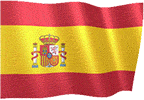 Bak's Jezynowka (Brandy / Poland)
Bak's Jezynowka (Brandy / Poland)
 Bak's Sliwowica (Brandy / Poland)
Bak's Sliwowica (Brandy / Poland)
 Carlos I Gran Reserva (Brandy / Spain / Jerez)
Carlos I Gran Reserva (Brandy / Spain / Jerez)
 Castel D'ajac (Brandy / France)
Castel D'ajac (Brandy / France)
 Dunill (Brandy / France)
Dunill (Brandy / France)
 Five Star (Brandy / Armenia)
Five Star (Brandy / Armenia)
 Kakhuri Gvinis Marani (Brandy / Kakheti / Georgia)
Kakhuri Gvinis Marani (Brandy / Kakheti / Georgia)
 Magno Solera Reserva (Brandy / Spain / Jerez)
Magno Solera Reserva (Brandy / Spain / Jerez)
 Navip Slivovitz (Brandy / Serbia)
Navip Slivovitz (Brandy / Serbia)
 Piasecki Sliwowica (Brandy / Poland)
Piasecki Sliwowica (Brandy / Poland)
 Pliska (Brandy / Bulgaria)
Pliska (Brandy / Bulgaria)
 Shabo VSOP (Brandy / Ukraine)
Shabo VSOP (Brandy / Ukraine)
 Troyanska (Brandy / Bulgaria)
Troyanska (Brandy / Bulgaria)
 Valco (Brandy / Romania)
Valco (Brandy / Romania)
 Veterano (Brandy / Spain / Andalucia)
Veterano (Brandy / Spain / Andalucia)
Brandy is a spirit produced by distilling wine, the wine having first been produced by fermenting grapes. Brandy contains 36%–60% alcohol by volume and is normally consumed as an after-dinner drink. While some brandies are aged in wooden casks, most are colored with caramel coloring to imitate the effect of such aging. There are three main types of brandy. The term “brandy” denotes grape brandy if the type is not otherwise specified.
Grape brandy - Grape brandy is produced by the distillation of fermented grapes.
Fruit brandy - Fruit brandies are distilled from fruits other than grapes. Apples, plums, peaches, cherries, elderberries, raspberries, blackberries, and apricots are the most commonly used fruits. Fruit brandy is usually clear and 80 to 90 proof. It is usually drunk chilled or over ice.
Pomace brandy - Pomace brandy is produced by fermentation and distillation of the grape skins, seeds, and stems that remain after grapes have been pressed to extract their juice (which is then used to make wine). Examples include Italian grappa, French marc, Bulgarian grozdova, Georgian chacha, and Cretan tsikoudia. Most pomace brandy is not aged and not colored.
Brandy has a rating system to describe its quality and condition; these indicators can usually be found near the brand name on the label:
* A.C.: signifies that it is two years old and aged in wood casks.
* V.S.: "Very Special" or 3-Star, aged at least three years in wood casks.
* V.S.O.P.: "Very Special Old Pale" or 5-Star, aged at least five years in wood casks.
* X.O.: "Extra Old", Napoleon or Vieille Reserve, aged at least six years, Napoleon at least four years.
* Vintage: Stored in the cask until the time it is bottled with the label showing the vintage date.
* Hors D'age: These are too old to determine the age, although ten years plus is typical, and are usually of great quality.
Brandy is produced using one of three aging methods:
* No aging: Most pomace brandy and some fruit brandy is not aged before bottling. The resulting product is typically clear and colorless.
* Single barrel aging: Brandies that have a golden or brown color may have been aged in oak casks.
* Solera process: Some brandies are aged using the solera system. Brandies from Spain are typically aged by means of this process.
